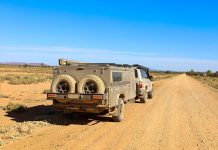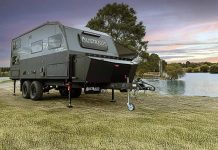Out of all the ways we can travel around the country, free-camping is my favourite. There is something very challenging about living in your caravan in a remote area, using only the resources you have available to you at the time. The other challenge is to see how long you can stay off the grid, as this means you can enjoy these locations for longer periods.
The problem for many caravanners is, they struggle to free-camp for longer than a few days, even if their caravan is equipped with the latest in power and water systems. They often run their batteries flat, run out of water, or encounter some other issue.
CHOOSING A CAMP
The first thing you are going to want to do is find somewhere to camp and see what facilities, if any, are provided. In the past, we used to use paper maps but the information they showed was extremely limited. These days, we have the internet, smart devices and community-based information.
We have found one of the best smart-device apps for locating free camps is WikiCamps. For a minimal fee, you can download the app and have access to all the information you need about campgrounds anywhere in Australia. The best thing about WikiCamps is that the information is crowd-sourced, meaning users can contribute to the data and update information if they find any details inaccurate.
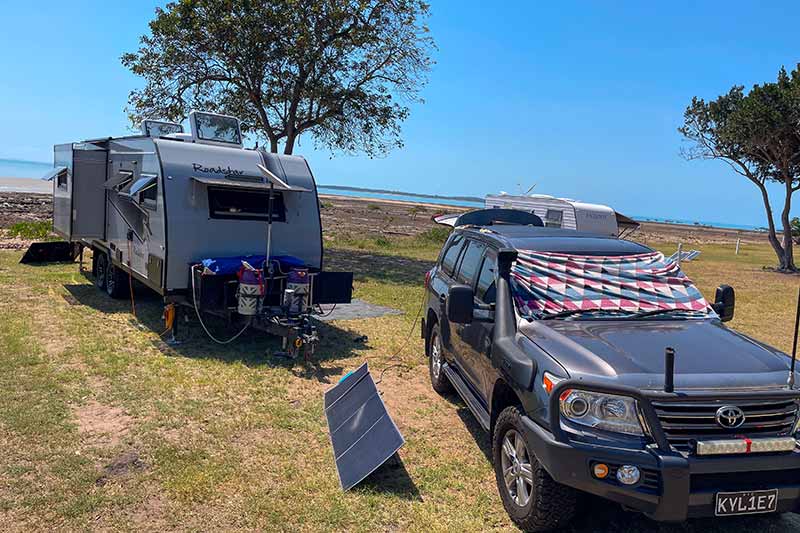
The worst part is that the data is crowdsourced. I know that sounds strange but the fact is, you are relying on the users to contribute accurate data. We have found some campsites listed on WikiCamps are not authorised campsites at all, so it’s worth reading the reviews and comments.
If you are a little old-fashioned and prefer paper-based information, Camps Australia Wide produces a book with camp information as well as maps. It also backs up its books with a smart-device app. Just be aware that anything printed is only current at the time it is published.
CHOOSING A SITE
Once you’ve arrived at a campground, it’s time to choose a site. If the camp is crowded, you may not have a lot of choice, but if the place is empty then you can be a bit fussy.
Most caravanners will set themselves up to have the best view or be close to a waterway but, if you’re free-camping and relying on things like solar panels to recharge batteries, or you want to have access to satellite TV, these may not be the best sites to choose.
For instance, in summer, you may want to face the front or rear of the van to the north to minimise exposure to the sun, heating the interior. In winter you may face the non-awning side of the van to the north to take advantage of the natural heating of the sun. It may also ensure your solar panels have maximum exposure to the sun without fixtures like the air-conditioner or roof hatches casting shadows across them.
If you park your caravan underneath trees, you will need an alternative source of solar power as the ones on the roof will not work effectively. More about that later.
ELECTRICITY
The thing that caravaners struggle with the most is maintaining their batteries’ state of charge (SOC) high enough to keep up with their power demands. It’s amazing considering many new caravans come with decent lithium battery systems complete with a few hundred watts of solar panels on the roof.

The problem is, many owners completely underestimate just how much power they use, especially if they are running high-wattage appliances like compressor fridges, big TVs and even household electrical appliances through an inverter. What’s more, they rely on rooftop solar panels that, even in the peak of summer, may only provide high-amp charging for five hours a day.
This happens because solar panels on the roof don’t get direct sunlight until around 11am and this will only last until around 3pm. This effective recharge time can be less in winter. And if you’re using appliances during the day, even if you get 40A of solar charging, you will still be using power, reducing your net charging to well below what you may expect.
The best way to increase solar charging is to use external solar panels in conjunction with your rooftop panels. Even a single external solar panel can dramatically increase the amount of solar charging you get through the day. This is because it can be physically moved to a position where it gets direct sunlight from early morning to late in the day.
We have a 200W folding panel that is connected to a separate solar controller to supplement our solar recharging. In summer, we generally leave it pointing north where, combined with our rooftop panels, it generates more than enough power to recharge our batteries by lunchtime. In winter, or if we are camped under trees, we move it three times a day to maximise solar charging.

The weather is not always going to cooperate and you may have to deal with cloudy or rainy conditions. The first thing I would say is not to be too concerned (read: obsessed) about charging your batteries to 100 per cent every day. It’s okay for them to partially recharge and then discharge at night. You just have to be mindful that you don’t discharge them too far.
You can also limit the amount of power you use by turning off as many devices as possible. Something as simple as unplugging a TV can save a small amount of power over time. If you get two or three days in a row of bad weather, you will want to have a backup of some description. That might be a petrol generator, a lithium power pack or even charging from your tow vehicle. Either one of these will get you out of trouble.
WATER
Another aspect of free-camping people often struggle with is having a sufficient supply of water to last their stay. This is despite most modern caravans being fitted with two or three water tanks. Just like electricity, most caravanners have no idea of just how much water they will use, especially if they are used to using an unlimited supply at a caravan park. Fortunately, it doesn’t have to be this way and, in most cases, you don’t even have to change your water use habits too much.
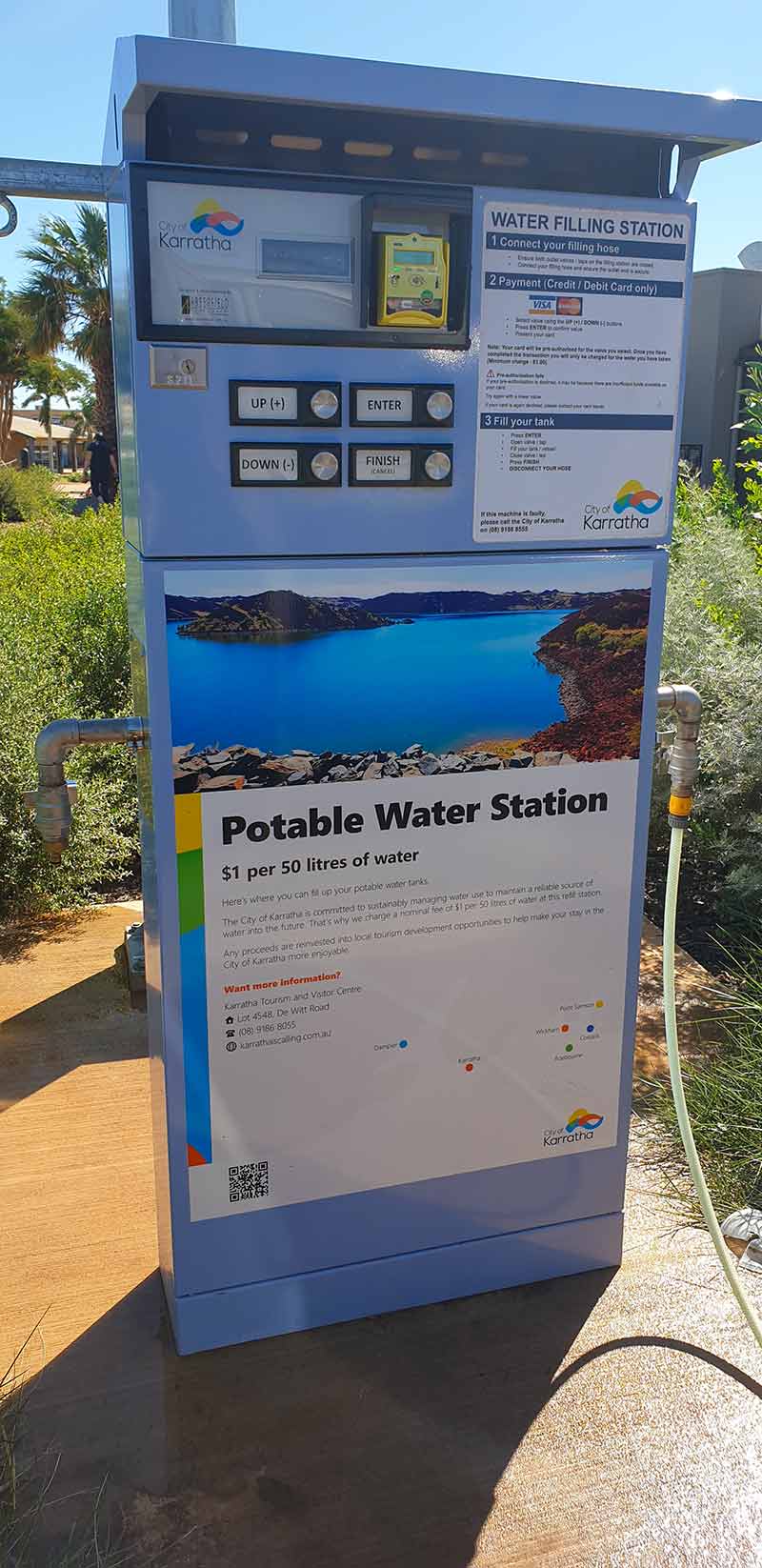
The fastest way to use up the water in your tanks is to use the shower, if you have one. Most water pumps will supply water at around 10 to 12L per minute and most shower heads won’t limit this flow by much, if at all. So if you have a van with two 90L tanks for a combined 180L, and you run your shower for just five minutes, you’ll use 50L or about 28 per cent of your water supply.
At that rate, if you flush your toilet a few times and wash some dishes, you may get three showers before running out of water. Not much if you want to stay longer than a few days.
Consider fitting a new showerhead with a mist function to extend your water supply. Even at full pressure, these limit the flow to around 5L per minute, depending on the model, almost doubling the number of showers you can have from the same amount of stored water. If you then use the shower method of only turning on the tap to wet down and rinse off, you can use as little as 10L of water per shower.
Remember, you don’t have to shower every day. By showering once every two days and using the mist function, you could easily make your water last for two weeks.
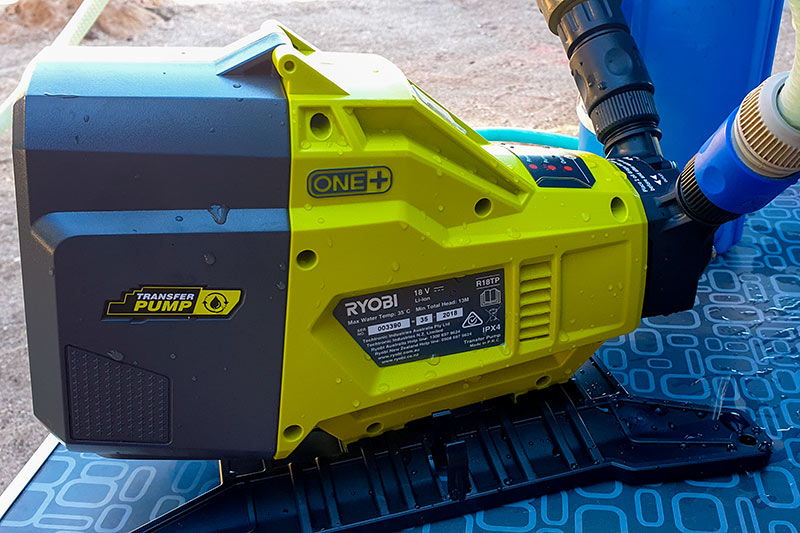
If you want to stay longer, you will eventually need to refill your water tanks. Some caravanners will carry a water pump and filtration system and pump water from a nearby river or lake but, in all of our travels, we’ve never really found a location where this would be convenient or even possible.
We suggest you invest in a good water bladder and a small pump to transfer the water from the bladder to your caravan’s tanks. There are a multitude of bladders available on the market. We found one that can hold a maximum of 150L and it can sit across the footwell of the rear seats of our Land Cruiser. You would be surprised at how many places there are where you can legally fill your water bladder that is not too far away from your campsite.
As an example, most town visitor information centres will allow you to fill your bladder as long as you ask permission first. They may ask for a small donation, which would be quite reasonable. Further, many towns are installing paid water filling points. Here you may have to pay a small fee and be limited to a maximum amount of water per fill. Again, we have found these very reasonable, offering up to 150L of water for less than $5.

Whatever you do, never assume you can use any tap you find to fill your water bladder. Always try to get permission and, if in doubt, find another source.
It is also very important to ensure that any water you use is potable. Remember, many places like public parks and cemeteries use recycled water to water their plants and grounds. Again, if you’re not sure, move on.
That’s probably enough to digest for this issue. Next month, we will look at some of the things you may not have thought about that can also help extend your free-camping experience.
Hot tip: Run as many appliances off 12V as possible.
If you need to power appliances such as CPAP machines, large TVs or the battery chargers of power tools, try to find 12V versions of their power supply. The reason for this is, it is much more efficient than running main power appliances from an inverter.
Hot tip: Minimise water use while washing up.

Wipe down your cooking pots and pans with paper towel before washing them. Also use paper cups and plates, which can become kindling for your campfire.
Hot tip: Use high-power appliances during the day. Don’t wait until night.
If you need to use your water pump for showers or cook with an appliance running from an inverter, do it during the day when you have plenty of solar to recharge the batteries. You want to minimise night time power consumption as much as possible.



